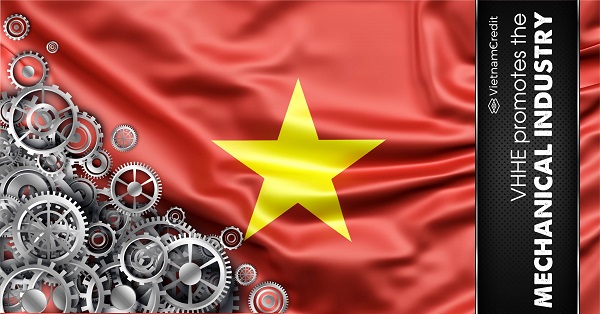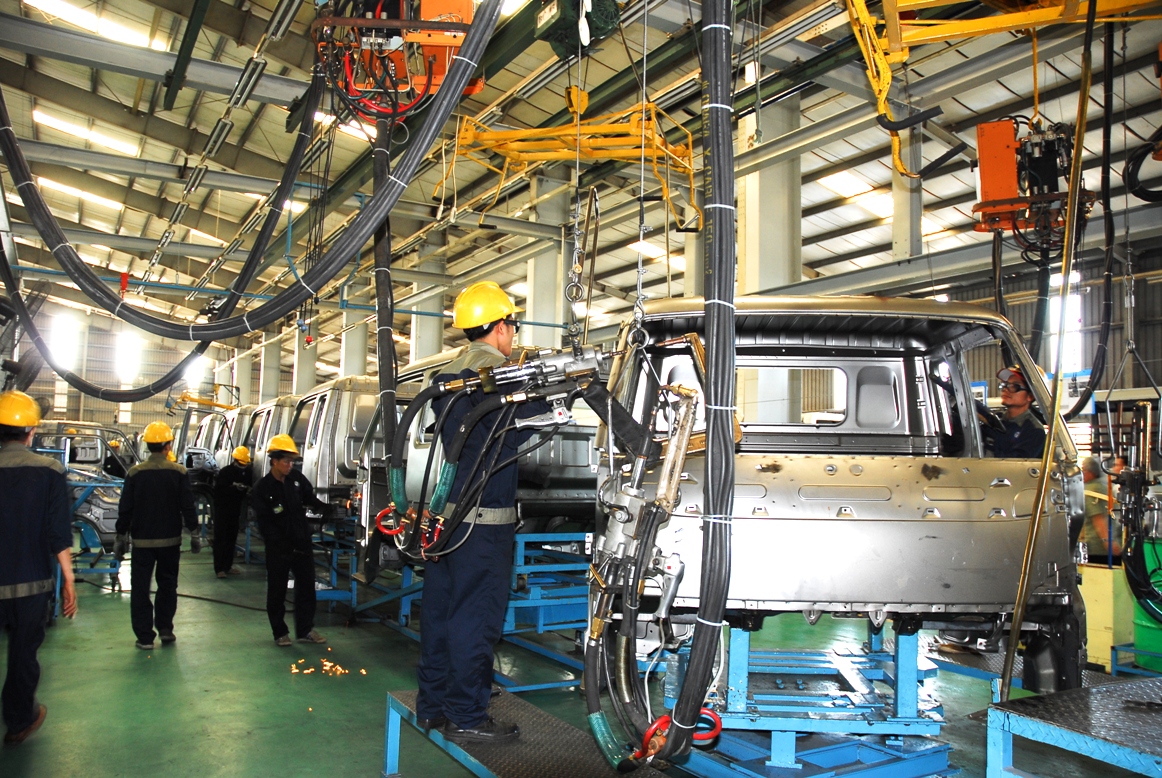The Vietnam Association of Mechanical Enterprises stated that there would be many opportunities for Vietnam’s mechanical industry in the coming time. However, grasping said opportunities may be difficult.
An opportune market
According to the Department of Industry, about 25,000 mechanical enterprises are operating in Vietnam, accounting for nearly 30% of the country’s total number of processing and manufacturing industry enterprises. Vietnam’s mechanical industry has gradually mastered and improved the localization rate, creating a driving force to promote other industries and economies to develop, creating jobs for millions of workers.

Vietnam's mechanical industry is strong in three sub-sectors:
- Motorcycles and motorcycle spare parts
- Household mechanics and tools
- Automobile and auto parts.
These three sub-sectors account for nearly 70% of the total industrial production value of the country's mechanics.
The Vietnam Association of Mechanical Enterprises (VAMI) stated that there would be many opportunities for Vietnam’s mechanical industry in the coming time. Opportunities would come from demand for machinery and equipment for industrial projects such as thermal power, hydroelectricity, wind power, chemical, mining, mineral processing; equipment and materials for the high-speed railway system construction; subway system construction; automotive industry, etc.
Mr. Nguyen Chi Sang, Vice President and General Secretary of VAMI, gave a specific example: According to the Power Plan VIII, in the wind power segment, with an expected capacity of 40,000 MW by 2045 and can be expanded, the value of installation and manufacturing will bring about 40 billion USD to the mechanical industry.
Sharing the same view, Mr. Nguyen Quang Hieu - General Director of Petrovietnam Marine Shipyard Joint Stock Company (PV Shipyard), has an optimistic view of the future for Vietnam’s mechanical enterprises.

Mr. Hieu shared a specific analysis of a hypothetical offshore wind power project. The equipment the mechanical industry can do is manufacture propellers, wind columns, base systems, etc. The base system for an offshore wind power project requires at least 35-40 columns. It is expected that the investment for the base system will be about 300,000 tons of equipment each year. Each ton equals 4,000 USD, including the cost of materials. Thus, each year, on average, there will be about 1.2 billion USD of market share for Vietnam's mechanical enterprises.
That will be a big market in the next 5 years. Not only that, Vietnam is being selected by the US, Denmark, Norway, etc., to replace China as a place to both produce and manufacture wind power equipment for the markets of countries in the region.
Big partners are paying attention to Vietnam and Korea. In this race, Korea is more proactive because of the availability of sheet steel as raw materials. However, wind power in the Vietnam market has bigger potential, specifically in terms of market share, location of a remote port near the sea, etc.
What obstacles stand in the way?
Despite such abundant potential, Vietnam’s mechanical industry seems to be struggling still. Grasping said opportunities may prove to be difficult.
There exist obstacles to Vietnam’s mechanical industry. Firstly, Vietnam’s mechanical enterprises are still small. Secondly, there is a lack of connection and development. Vietnam’s mechanical companies tend to operate spontaneous and fragmented businesses.
In addition, VAMI said that over the years, with limitations and weaknesses coming from mechanical enterprises and the State's management mechanisms and policies, the mechanical industry development has been lackluster and unsatisfactory.
Vietnam's mechanical enterprises do not gain much market share even in the domestic market and are always short of orders. Many large projects in construction, transportation, irrigation, oil and gas, marine economy, shipbuilding, automobiles, motorbikes, etc., mainly use imported mechanical products or are undertaken by FDI enterprises.

In 2012, the Government approved the Mechanical Engineering Development Strategy, and in 2018 there was an update to suit the new situation.
However, the mechanisms and policies to follow have not been available until now. There is no good policy. So, while the mechanical market is large, Vietnam’s mechanical enterprises are still struggling.
Mechanical enterprises still have to self-advocate and develop without efficient support from the State's policy system to have many orders from public investment and large projects. For example, recently approved and invested wind power projects have not been linked to the mechanical industry, so domestic mechanical enterprises cannot participate.
Source: vietnamnet.vn, congthuong.vn
Compiled by VietnamCredit


























































